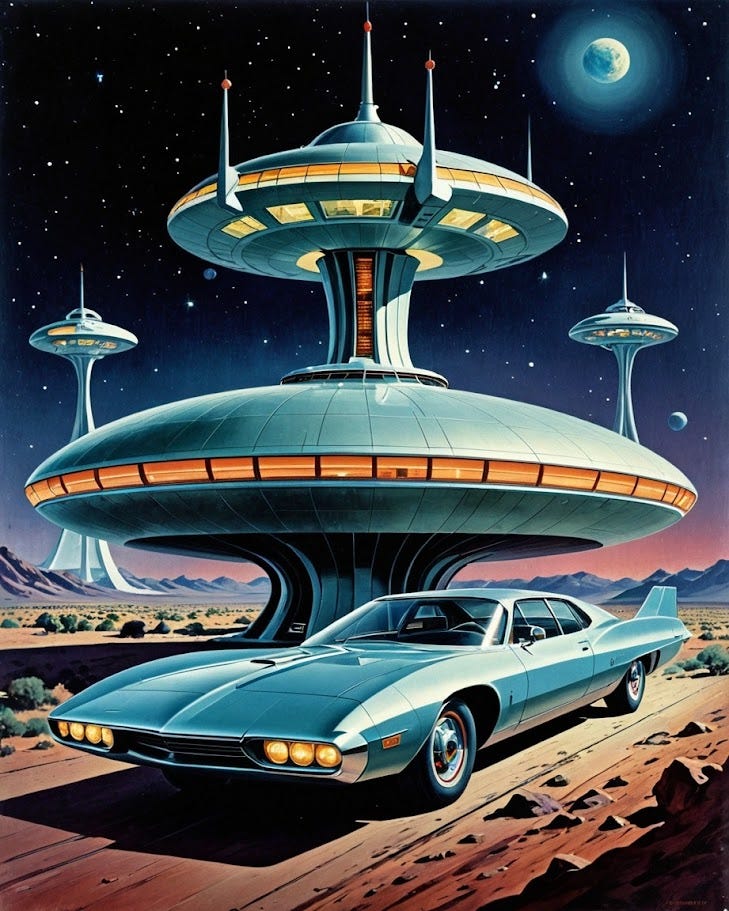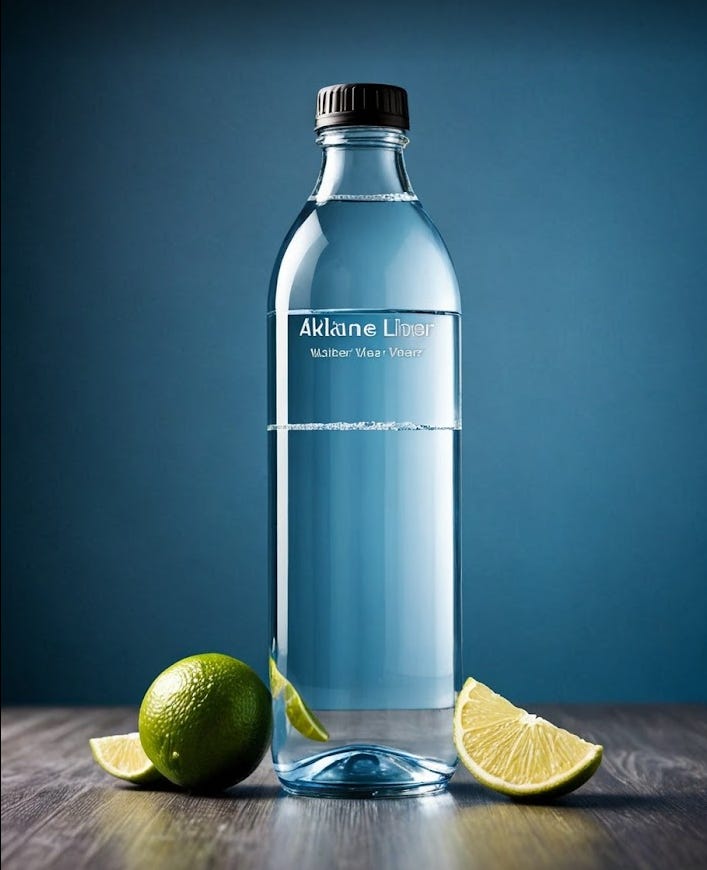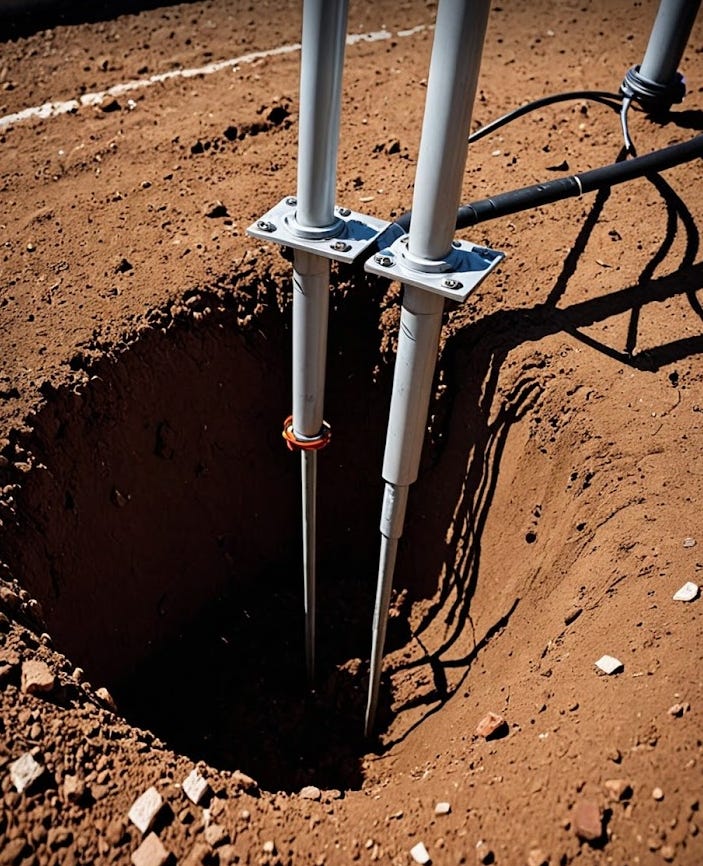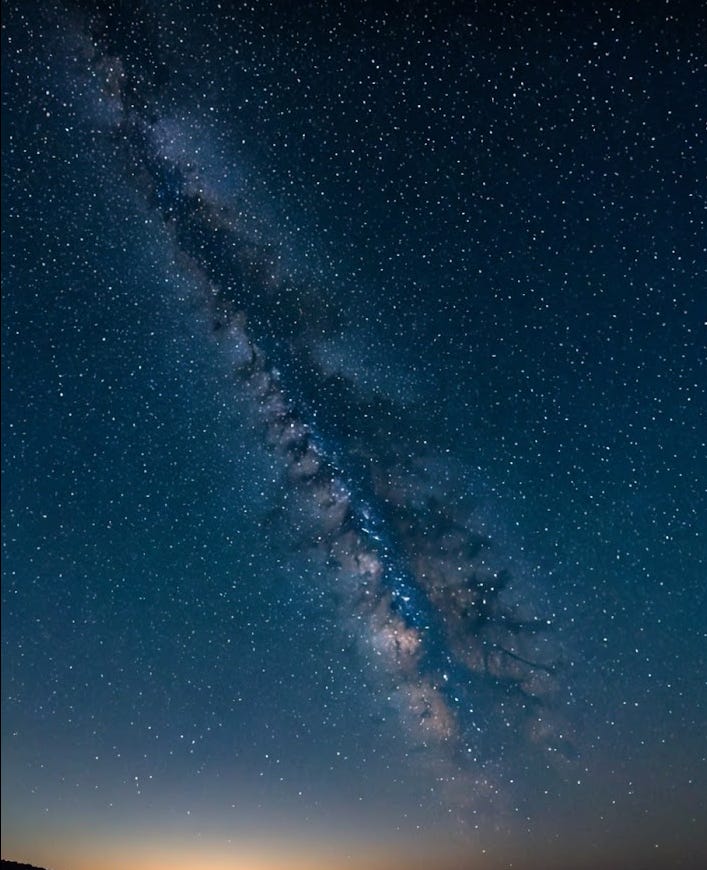For someone who appears to live the life of Riley, one might be compelled to ask just why Riley seems so discontent and unhappy at times. Well, it was all brought on by a major crisis that Riley had experienced some years ago. It changed and altered him so that even to this day, Riley has not fully recovered.
For nearly fifteen years, Riley was employed at the company and climbed the corporate ladder with nothing more than dedication and hard work. He rightfully earned the position of executive account manager that brought with it a comfy salary, hard-wall office, and all the goodies given to spoil people who already have way more than they should.
But this buy-out made it necessary to reduce expenses and—as the CEO worded it—painfully decide to reduce head-count.—LAYOFFS!
"I don't think it'll be us." said one of Riley's coworkers during lunch.
"Yeah, me neither." agreed Riley. "We're too important to get rid of. Besides, layoffs are a way for companies to get rid of workers at the bottom ten percent. It's a perfect opportunity for HR to finally take out the trash in this place." Riley celebrated his cold statement by swigging the remains of his diet Dr. Pepper.
***
It was two weeks later—a Friday morning—when Riley reported to the office and walked past a small conference room where a never-seen-before bald and heavy-set man sat. At the center of the table was a box of tissue.
"Weird..." Riley thought to himself.
By mid-morning, one of Riley's coworkers scurried into his office. "Riley! Layoffs are happening! They're actually in the small conference room and calling people in one-by-one to lay them off."
"What?" exclaimed Riley! That can't be! Not our department!"
"I'm afraid it's true, Riley. They sneak up on you without warning, tap you on the shoulder and motion you to follow. None of us knows who is going to be laid off, next. If anything happens to one of us, it was nice working with you."
Lunch hour was very depressing and somber for Riley and coworkers as they discussed the shocking details of the layoff.
"They got Henry."
"Henry? He's been with the company for almost thirty years!"
Riley offered some hopeful information for everyone. "He's old! The guy's a lame duck and just waiting for his retirement. Of course they were going to lay him off."
"They got Mary! She had the whole East Coast market."
"Mary? Wow, I'm surprised!"
Again, Riley offered some hopeful insight. "Yeah, but Mary has three kids at home. She's a mother and has to take time off to be with her kids. They don't want some woman with kids working this job. Of course they were going to lay her off!"
"Oh and Steve! They let Steve go this morning!"
"Poor Steve! He's got colon cancer. What's he going to do, now?"
"Come-on, guys!" answered Riley. "Don't you get it? They are laying off all the people who are useless; like old people, women who should stay at home with their kids, and people with illnesses. Like I said before it's the bottom, ten percent of poor performers who are laid off. The company is just taking out the trash. They won't get rid of us. We actually work around here."
What Riley didn't understand is that most of the people at that the lunch table not only had concerns about losing their own jobs, but also had concerns for their fellow coworkers. Riley was purely selfish and self-centered. He only cared about himself!
***
By 1:00 in the afternoon, the boss entered Riley's office. "Riley, I need to talk to you."
Riley's face turned flush. It just couldn't be! He was about to lose his job! He followed his boss into the big office and sat down.
"Listen..." the boss began. “We've got you on the list of people to let go. But I think I can save you. Although your job is being eliminated, the new company has a position opening. It's the exact, same position that you are doing, now!"
Riley sighed a bit of a relief. "Okay... What do I have to do?"
"Just go through the motions, today." said the boss. "In about an hour or so, the firing manager will bring you into the conference room to announce that your job is being eliminated. Sign the paperwork and collect all the information on your severance. Afterwards, just let them escort you out the building. I just got off the phone with our new manager. They want to hire you, Riley, and have you start immediately! Unfortunately there is a one week delay before you start your new job. And update your resume so they have something on record. Riley, this is a very, rare opportunity; and luck is certainly on your side today. And let me mention, it's a sweet deal for you. Because you are considered a direct new hire, you will immediately receive a $10,000 sign-on bonus. Plus you will get a 15% raise in your salary!"
"Wow!" exclaimed Riley. "What about benefits? How about my vacation time?"
"The new company has nearly the exact, same health benefits. As for time off, they start you with the usual holidays along with four weeks of vacation."
Suddenly, Riley didn't look too happy. "Four weeks? That's it? But I have eight weeks, now."
"Well, you are a new hire. They have to offer you the standard four weeks."
Riley sat still and expressionless for several seconds. It wasn't fair that the new company took advantage of him by offering such a measly amount of time off. "Here's the thing..." Riley began. "I want to be grandfathered in with my vacation time. I want all of my eight weeks to transfer over to the new company. I've worked here for almost fifteen years, and I think I deserve it."
"We can't do that Riley. Policy is policy."
"Well, suddenly I don't know if I want to take the job."
The boss was flabbergasted. "Riley, do you understand what is happening? You are less than an hour away from losing your job. You could spend months trying to find a new one, and there's no guarantee that you'll find a company that will offer you the same salary. I've pushed for the new company to open a position for you. And not only have they opened a position for you, but they are giving you a nice sign-on bonus with 15% increase in salary. Are you really going to turn the offer down for vacation time? A lot of people in this world have never even heard of vacation time."
Riley remained still and expressionless until reluctantly answering, "Fine! I'll take it! I guess you leave me with no choice.”
"Good man, Riley! Good man! Now take next week off and return the following Monday morning. That will be your start date at the new company.”
***
As the boss warned, the bald and heavy-set firing manager entered Riley's office and motioned him to follow. Riley had just created his automated out-of-office message that informed people who emailed him throughout the week that he would return the following Monday.
In the conference room he was given the sad news that his position was being eliminated, and then reminded that there was a box of tissue on the table if needed. Riley signed all of the exit paperwork and collected a nice, fat severance package. Then he was escorted out of the building at two hours before quitting time. His weekend and vacation started early.
Riley's wife was surprised to see him home so early and immediately noticed the grave look on her husband's face. "Uh-oh! What happened? Why are you home so early?"
"I was laid off."
"Laid off? Oh no! Don't worry! We'll get through this!"
Riley shared some additional information with his wife. "The new company is offering me a position. I guess it's the exact, same job that I was doing before getting laid off."
She sighed a relief, "Oh good! Thank God! When do you start?"
"I'm supposed to take a week off and report to work the following Monday."
"Good!"
But Riley wasn't exactly thrilled. "But they only give me four weeks of vacation time."
"Four weeks?" asked Riley's wife. "What about salary? How is that?"
"I'm getting a 15% increase in salary, plus a $10,000 sign-on bonus."
"Great!" exclaimed Riley's wife. "You should be happy! This is like a blessing in disguise. And don't worry about your vacation time. You'll build that up again."
Riley shook his head and sighed. "Still, I was laid off." He opened the refrigerator door and pulled out four bottles of beer. Then he sat out in the garage to drink them while replaying in his mind the events of the day. Riley was angry and confused. Why had he been laid off? The company actually saw him as the bottom 10%—garbage to be thrown out in the dumpster. He dedicated himself to the company all those years; and that was thanks he got?
All day Saturday Riley sat on the sofa, drowning out his sorrows by drinking beer and watching TV. He didn't wash for the day, shave or brush his teeth. He was too depressed to even take care of himself. By late afternoon, Riley took out his frustrations by yelling and swearing at the kids.
"Pick up your damn toys! I don't feel like living in a shit-hole!"
"Riley, don't swear at the kids!" snapped his wife.
"Look, I just want people to clean up after themselves."
Sunday was no better. Riley still hadn't washed, shaved or brushed his teeth. It was only 10:30 in the morning and already he was on his second beer.
Riley's wife had seen enough of the ugly behavior from her husband. "Riley, it's Sunday morning. Why are you drinking beer?"
"Because I'm thirsty." Riley's voice had a tone of ugly calmness that reflected someone who held in an unbelievable amount of rage and anger. Being calm was the only thing he could do at that moment.
"But you're drinking beer. That's alcohol. You're going to get drunk."
"I'm not going to get drunk off a couple of beers."
"Yes, but you're going to keep drinking them like you've been doing since Friday. You've been drunk for a couple of days, now."
"I'm not getting drunk!" argued Riley. His voice was suddenly not-so calm as he nearly shouted.
"But you're on your second beer at 10:30, Sunday morning." retorted Riley's wife.
Now, Riley began to shout, "I'm not getting drunk! I'm just drinking beer!"
"Riley, why are you drinking beer? And why are you shouting at me?"
"I'm not shouting! And I'm drinking beer because I'm thirsty!"
"You're thirsty? Well then why don't you drink water?"
"I tried water, but it's not enough! I need something else!"
"Well that sounds like you have some sort of problem, doesn't it?"
"I don't have a problem! I'm just drinking beer! And do you want to start being critical? Let's be critical about you. How about all the junk food you're eating? You're getting a fat ass from it! There, how do you like that?"
Riley's wife was now outraged. "How dare you say something like that to me! And just what the hell is your problem? Why have you suddenly turned into a miserable ass since Friday afternoon?"
Riley had a simple answer, "Well I'm really sorry, but maybe I'm not quite myself because I lost my job! I was laid off!"
"You were laid off?"
"Yeah!"
Riley's wife forced a laugh while shaking her head in disbelief. "You really think you were laid off? Riley, there are people in your office who went home this weekend without a job. They'll be hunting for many months—possibly a couple of years for a new job. They'll have to collect unemployment. And when that runs out, they'll have no choice but to get a job at Walmart or someplace degrading just to try and make ends meet. Do you realize that people are losing their homes because of not having a substantial income? And all you have to do is take a week off, report back to the office and make even more money? So you can stop feeling sorry for yourself. You did not get laid off!"
Riley whipped his half drunk bottle of beer across the room and right through the family room window. "How dare you say that? I was laid off! Don't you get it? The company saw me as the bottom 10% and got rid of me!" Then Riley melted into the floor and pounded his fists onto the ground while sobbing.
Riley's wife just shook her head in disbelief and walked away. It truly was a dark moment for Riley. He lost his job, turned to drinking to cope with the misery. And now he couldn't get any sympathy from his wife.
***
Monday morning, Riley woke up early. It was one week before starting the new job (actually his old job—just with a new company and for much, more money.) He finally showered, shaved and brushed his scummy teeth. He put on a suit and tie, and then head out the door. The mission for today? Riley needed to file for unemployment so that he could receive money for the week off.
At 9:00am, Riley stormed through the door of the state unemployment office. But what was this? There was already a long line of people waiting. There was a wide range of newly unemployed people—union laborers, factory workers, office people; even those who looked like losing their jobs was a full time career so they could live off the system.
Riley was confused. He identified himself as a special worker who wore a suit and tie and came from corporate. Did they have a special area for people like him? Riley cut through to the front of the line and approached the desk to interrupt the clerk. "Excuse me! Is there a place where I'm supposed to go?"
The clerk looked irritated to be interrupted by Riley. "I'm sorry?" she asked.
"Where am I supposed to report to?"
"Sir, are you here to file for a claim for unemployment?"
"Yeah, I just want to know where people like me are supposed to go. You know... white collar business people who are laid off from corporate offices?"
The clerk handed Riley a packet of paper with pen. "Sir, fill out this paperwork and wait at the end of the line for your turn. This is the only line if you want to file a claim."
Riley couldn't believe what he was hearing. There was no special area for people like him? "Are you serious?" he asked.
"Yes, sir! Please go to the end of the line and wait your turn!"
And so Riley stood in line while filling out the paperwork. 45 minutes later he was finally at the front desk, soon to be escorted to an associate who would view his case.
She was a rough and rugged older woman who sat at a desk before a computer, and looked to have experienced her share of abuse in the years. She must have seen and processed thousands of claims of unemployment.
Riley handed the woman his paperwork.
"Okay... so you were earning $319,000 at the time of losing your job..."
It was a degrading salary for Riley. It was like the company teased him by implying they would not reach $320,000."
"...therefore you are qualified to receive a limited six month salary that would equate to $210,540 per year."
Riley remained still and expressionless for a few seconds. "So in other words you are telling me that I can only get $210,000 a year?"
"No salary that would equate to $210,540 for a maximum of six months while you find your new job!" the clerk answered with a smile.
The answer wasn't good enough for Riley. "Well what kind of crap is that? I can't live off that for the week. The company isn't paying me for the time off. I need money, or I might have to dip into my savings account."
"Sir, what do you mean 'for the week’? Is your company temporarily laying you off?"
"No!" Riley exploded. "Now just a minute! You've got it all wrong! I was laid off. I lost my job. The company I worked for decided that my position was no longer needed. But the new company who is purchasing them is hiring me. I start for them next Monday."
"So you have work lined up for next week?" asked the clerk.
"Yes!"
"And how long have you been unemployed?"
"By the time I start my new job, it will be one week."
"Sir, I'm afraid that you do not qualify to receive unemployment benefits. One week is not enough time to be considered unemployed."
"What are you talking about?" asked Riley. "I'm out of a job!"
"But you start a new one next week." answered the clerk. "What if we did that for everyone? We'd run out of money. You can still file to add your case to the percentage of unemployed if you like."
"You're damned right I want to file!" shouted Riley. "Even if I don't receive my right to unemployment, I want the government to know about the despicable treatment that American workers receive. You make sure that the president of the United States receives my unemployment claim! It's people like me who help keep this country together!"
***
On Wednesday, Riley attended a workshop at a convention center with about a hundred other newly-unemployed people throughout the area offered my the state’s unemployment services. The workshop was designed to educate those unfortunate people on how to survive during times of unemployment. Really, Riley did not belong there. I'm sure by now you would agree that Riley didn't actually lose his job—not in the sense that most people do.
As luck would have it, Riley met about a dozen of his coworkers who were laid off on the same day.
"Hey, Riley is here!"
"They got you, too, Riley?"
"Wow, this layoff is crazy!"
"I heard this workshop can help us get a new job."
Then someone asked, "How about you, Riley? Any leads? Did you get your resume updated?"
"Yeah..." answered Riley. "The new company is hiring me back for the same position. I start on Monday. They just wanted me to update my resume for their records."
"They hired you back?"
"So another words you really weren't laid off?"
"Yes I was!" snapped Riley.
"No you weren't! You go back next week!"
By now, Riley was at rope's end. He was tired of people telling him that he did not lose his job. "Look!" shouted Riley. "I'm in the same boat as you guys! They tapped me on the shoulder just like you, and brought me in the room for me to sign my exit papers and collect severance. But unlike you, I'm having trouble collecting unemployment. That means I have to go the week without a paycheck. Oh, and as for the new job; they only give me four weeks of vacation time."
Riley's coworkers took turns in adding sarcasm.
"Wow, sounds really rough…"
"Gee, I hope you can pull through..."
"Four weeks is so unfair..."
Before Riley had a chance to defend himself, the speaker of the workshop stood up on stage and announced, "If everyone can take their seats; we're going to get started."
The room quieted down, and everyone's attention was immediately turned to the front where a woman provided the proper introductions, and stated the obvious: that all were there to learn how to cope with the recent loss of a job, and how to move on.
Then the speaker transitioned into a powerful talk that educated everyone in the room as to what was happening to them. "The first thing you need to understand is that losing a job has stages that are similar to grieving the loss of a loved one."
A graph was projected onto a large screen.
"This x-axis of this graph represents time; starting from those moments just before learning that your job is over. At the right side is the day that you finally start your new job. The y-axis plots the ranges of mood and mental energy experienced. As you can see, your mood and energy is right in the middle—just normal—during the moments before learning that you are being laid off. Then, suddenly, your energy and mood spikes into panic and confusion right at the moment of learning the bad news. It stays like that for a few days to a week as you come to terms with realizing that you lost your job.
After a few days to a week, your mood and energy drop to depression. You feel hopelessness and despair. Although you have your resume ready, you realize that it will be a long time before you land a job similar to what you worked. This might be the stage where you are at, now? And then comes the stage of anger. This appears anywhere between 3 to 6 weeks as you feel injustice for what happened to you. Anger isn't a bad thing. For many people, it gives them the drive and energy to look for a new job.
Your energy will now roller coaster from depression, to frustration and then anger—again—until the day comes that you receive an offer for employment at another company. As you can see, your energy and mood shifts to happiness and excitement. On your first day and few weeks, your mood is soaring as you adapt to this new job. Then your energy and mood, finally swings back to normal.
As you can see, the loss of a job is a major crisis. It takes nearly a year to find a new job. But that's okay. Use this time to work through the grieving process.
***
And that's where Riley's troubles began. You see, the following Monday morning—while Riley remained in the stage of depression and despair—his alarm clock went off at 8:00am. It was time to start his new job. Riley showered, shaved and dressed in his office clothes. Then he drove his BMW to the office. Fortunately his recent loss of a job didn't cause Riley to fall behind in car payments, or even mortgage and utility payments for that matter.
And it really wasn't a new job. It was the same job in the same office building where he worked for years. He reported to the same office suite where coworkers who survived the layoff looked upon Riley in amazement. Riley truly was lucky. Not only was he able to keep his job with the new company, but he received his big, fat severance check AND a $10,000 sign on bonus with the new company. If that weren't enough, Riley received a 15% increase in his salary. That's $319,000 a year! Riley should have had perma-grin!
But Riley wasn't smiling. He logged into email and could see that business went on as usual. Clients called and scheduled teleconferences with him later that week. Even the boss popped his head in the door and said, "It's good to see you, Riley! I just could not let them lay you off! Welcome to the new company!"
After the things he learned at the loss-of-job workshop, poor Riley realized that he was never given the proper amount of time to mourn and grieve the loss of his job. For many weeks and months he worked under depression and despair. He never recovered from the crisis and must now be a bitter, resentful and contentious man who is never happy!
To make matters worse, Riley spent many days arguing and defending himself against coworkers who insisted that he wasn’t really laid off.
“You weren’t laid off, Riley!”
“Yes I was! How dare you say that? You’ll never understand what I had to go through.”
As you can see, it isn’t easy living the life of Riley.














